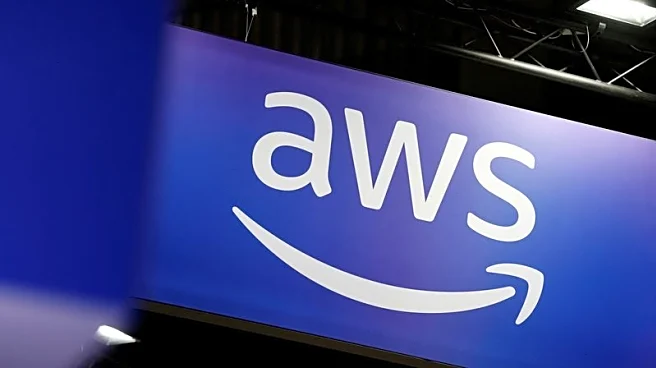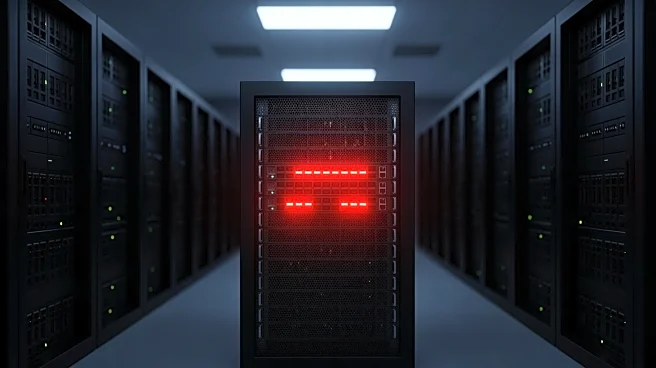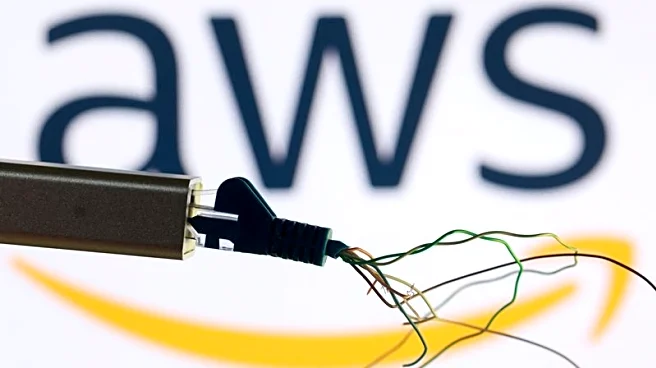What's Happening?
Amazon Web Services (AWS) experienced a significant outage early on October 20, affecting numerous websites and services such as Snapchat, Venmo, and others. The outage, which began around 3 a.m. EST, was traced to the US-EAST-1 Region in Northern Virginia
and was caused by an underlying issue with DNS, which translates website names into IP addresses. AWS reported that the issue was mostly resolved by 6:35 a.m. EST, with most service operations returning to normal. The outage impacted a wide range of platforms, including Amazon, Apple Music, AT&T, Blink Security, Chime, Fanduel, Fortnite, Life360, Lyft, McDonald's, Roblox, Roku, Starbucks, Verizon, YouTube, and Zoom.
Why It's Important?
The AWS outage underscores the critical role that cloud computing services play in the operation of major websites and applications. As many businesses and services rely on AWS for their infrastructure, disruptions can have widespread effects on user access and business operations. The incident highlights the vulnerability of digital services to technical issues and the importance of robust infrastructure and contingency planning to minimize downtime. The outage also serves as a reminder of the interconnected nature of digital services and the potential ripple effects of technical failures.
What's Next?
AWS will likely conduct a thorough investigation to prevent future occurrences and improve the resilience of its services. Businesses affected by the outage may review their dependency on cloud services and consider diversifying their infrastructure to mitigate risks. The incident may prompt discussions on improving DNS systems and enhancing the reliability of cloud computing services.
Beyond the Headlines
The outage raises questions about the concentration of digital infrastructure in the hands of a few major providers and the potential risks associated with such centralization. It also highlights the need for transparency and communication from service providers during outages to keep users informed and minimize disruption.














